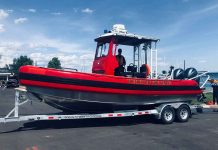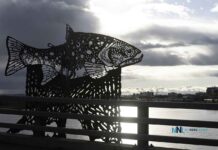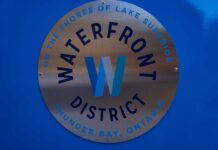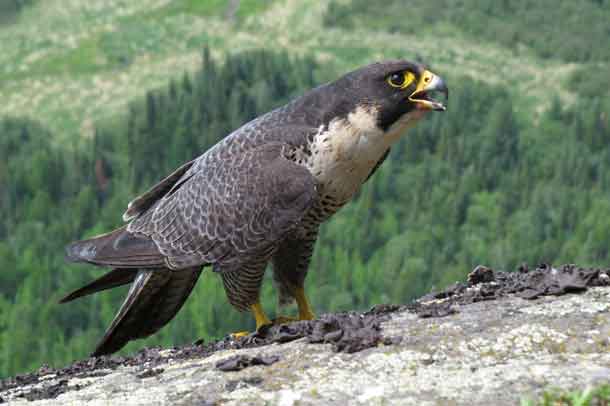
THUNDER BAY – The Nature Conservancy of Canada (NCC) has purchased one of the last privately owned, undeveloped shorelines between Duluth, Minnesota, and Thunder Bay, Ontario.
Known as Big Trout Bay, the property is located just minutes from the international border, and 45 minutes from Thunder Bay, on the shores of Lake Superior. Its densely forested land is crucial to several native species, including bald eagles and peregrine falcons, which are assessed as special concern by the Committee on the Status of Endangered Wildlife in Canada (COSEWIC). The 1,018-hectare (2,517-acre) property is composed mostly of coastal boreal forest. Nearly half of Canada’s bird species rely on boreal habitat like Big Trout Bay to complete their life cycle, and many of these species migrate throughout the Americas.
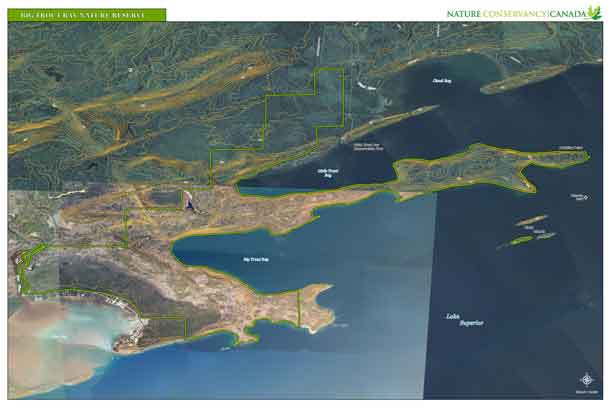
The property also includes 21 kilometres of undeveloped shoreline with towering cliffs, stretches of open bedrock and rugged cobble beach. These shoreline areas are especially important for biodiversity, as they provide varied habitat for species such as bird’s-eye primrose, lake trout and moose.
This Nature Conservancy of Canada project was generously supported by funding from the Government of Canada through the Natural Areas Conservation Program, and with the generous partnership of the JA Woollam Foundation, the Margaret A. Cargill Foundation, the Bobolink Foundation, the Rogers Foundation, The Nature Conservancy’s Wisconsin and Minnesota programs, The Conservation Fund, Green Leaf Advisors, and many individual donors in both the United States and Canada.
The Nature Conservancy of Canada has been working to conserve land along Lake Superior’s North Shore for 15 years, and this most recent acquisition brings the total conserved hectares (acres) of protected land that is open to the public for low impact activities, such as hiking, to 3,557 hectares (8,790 acres).
“This is a massive international undertaking, but when faced with the potential loss of habitat and wildlife on the largest freshwater lake in the world, thinking big is essential. Most importantly, this project gives us hope that the landscapes we love today will be here for others to enjoy tomorrow. It’s an extraordinary opportunity to make substantive and tangible progress on our overall goal of protecting Lake Superior’s North Shore,” states James Duncan, Nature Conservancy of Canada Vice President, Ontario Region.
“Lake Superior’s Big Trout Bay, McKellar Point and Pine Point represent the last unsecured Great Lakes wilderness on the continent— truly a global gem. After more than 15 years of work personally on this project, I understand the importance of preserving the natural view the Voyageurs saw and, equally as important, the ecosystems that have sustained First Nations for generations,” said Tom Duffus, Midwest Vice President for The Conservation Fund, which provided bridge financing as well as transactional and fundraising assistance to NCC via its Great Lakes Revolving Fund.
Facts
- With 21 kilometres of pristine coastline, including stretches of open bedrock and cobble beach, the bulk of the Big Trout Bay property is composed of coastal boreal forest.
- Nearly half of Canada’s bird species rely on boreal habitat like Big Trout Bay to complete their life cycle, and many of these species migrate throughout the Americas.
- Big Trout Bay’s cliff outcrop is also an important breeding ground for the peregrine falcon, a COSEWIC-designated species of “special concern,” and one of the many wide-ranging and migrating species that pass through this greater North Shore landscape.



